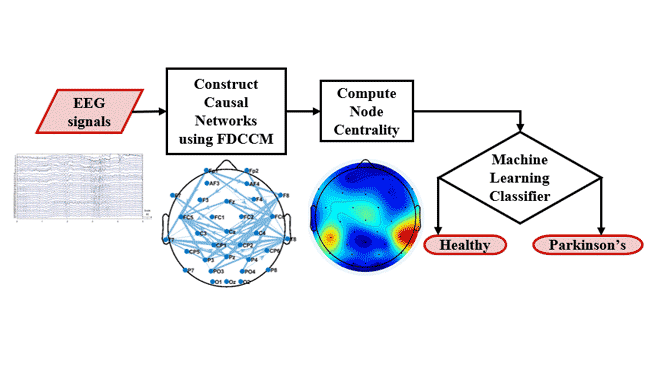The human brain is an intricate structure comprising a staggering 100 billion neurons interconnected by approximately 100 trillion synapses. Comprehending the causal interactions in the brain, where the underlying dynamics remain elusive, is paramount to unraveling the complexities of brain function and dysfunction. This research aims to develop an effective approach for analyzing brain connectivity and apply it to distinguish Parkinson’s disease patients from healthy individuals.
This paper introduces a cutting-edge causality measure known as frequency-domain convergent cross-mapping (FDCCM) that enables the inference of causal connectivity in complex systems such as the brain. FDCCM estimates the strength of causal connections by leveraging frequency-domain dynamics in time-series through nonlinear state-space reconstruction.
The work investigates the general applicability of FDCCM across varying causal strengths and noise levels, employing synthesized chaotic time-series data. The findings demonstrate the robustness of FDCCM in the presence of noise, thereby establishing its suitability for real-world applications.
Furthermore, this work showcases the practical implementation of FDCCM in differentiating Parkinson’s Disease by utilizing two resting-state Parkinson’s datasets, encompassing 31 and 54 subjects, respectively. The methodology involved constructing causal brain networks, extracting network features, and employing machine learning techniques to discern Parkinson’s disease patients from age and gender-matched healthy controls. Specifically, the FDCCM networks are leveraged to compute the betweenness centrality of network nodes, which serve as features for the classification models.
The outcomes of the analysis reveal the superior performance of FDCCM in distinguishing Parkinson’s disease patients from healthy controls, surpassing conventional methodologies. These findings underscore the potential of FDCCM as a potent tool in disease diagnosis and treatment, offering promising avenues for further research and clinical implementation.

